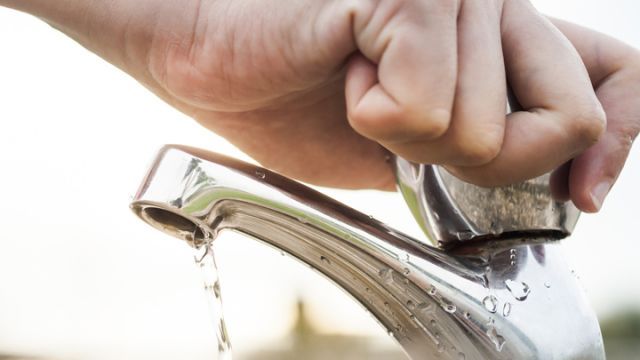
More than 18 million Americans got their drinking water from systems that had lead violations in 2015, the Natural Resources Defense Council has revealed in a new report. Your community could be one of them.
The research indicates that more than 5,000 community waterway systems across the nation violated the Lead and Copper Rule, a federal regulation managed by the U.S. Environmental Protection Agency. The law requires water utilities to avoid unnecessary exposure to high lead in water by using remedial measures, including corrosion control, lead pipe replacement and public education. Often, those measures are never put in place or monitored.
Even after the water crisis in Flint, Michigan made international headlines in January, the many violations that led to the city’s water system being contaminated with extraordinarily high lead levels are not listed in the EPA’s database, according to the report “What’s in Your Water? Flint and Beyond.”
In Flint, after two years of exposure and no warning from government officials, high lead levels in the tap water led to several deaths from Legionnaire’s disease, an unprecedented number of new cancer diagnoses, skin rashes, miscarriages, organ failure, blindness and other health conditions. Many suicides have been reported as well. In children, particularly those younger than five, lead exposure can cause a lowered IQ, cognitive and developmental delays, behavioral problems and other health issues that can endure a lifetime.
Chances are, you live in a community with tainted municipal water. Here’s why you probably want to avoid using tap water and opt for filtered, purified, distilled and other types of water, instead:
- The municipal water can be tainted anywhere. Elevated lead levels in water were discovered in 10 percent of houses tested in 1,110 communities serving 3.9 million residents, from Portland, Ore. to Passaic, N.J., according to the NRDC report.
- No one may be punished for water violations. “Basically, there’s no cop on the beat,” said Erik Olson, health program director at NRDC. The environmental advocacy organization found that in 90 percent of drinking water system violations, no one faced penalties. Only three percent were ticketed or sanctioned. This is because of poor data collection, relaxed law enforcement and political status quo, leading to unsafe drinking water conditions for millions of Americans.
- The EPA may know your water contains lead, but do nothing about it. “EPA is aware of inaccuracies and underreporting of some data in the Safe Drinking Water Information System,” the federal agency writes in a disclaimer on its website. “We are working with the states to improve the quality of the data.”
- Advocates exposing communities’ tainted water may be powerless to change it. For example, Marc Edwards, an environmental engineer at Virginia Tech, exposed the lead crisis in Flint. His research on water pollution has revealed high lead levels in major water systems, such as in Washington, D.C. more than a decade ago. “This is what we’ve been screaming to EPA about since 2004,” he told PBS NewsHour. He says he has written the agency many times to express his concerns, but hasn’t seen any results.
- No one may know your water is tainted. Only a small percentage of homes are tested, and that’s why not every resident who gets water from a tainted water system may be aware of it. Lead levels vary from home to home. According to industry estimates, 15 to 22 million Americans get drinking water through lead service lines, the pipes that connect the home to the main water line through lead pipes, which can release lead into drinking water running through the tap.
- You believe your drinking water is clean, but that may not be the case. “Americans take it for granted that the water flowing from their home taps is clean and safe, but all too often, that assumption is wrong,” Olson said. The only way to know for sure is to have your water tested.
- No amount of lead in water is safe. “Zero, only zero parts per billion exposure to lead would be safe,” said Kristi Pullen Fedinick, Staff Scientist of Natural Resources Defense Council.
— Kimberly Hayes Taylor

